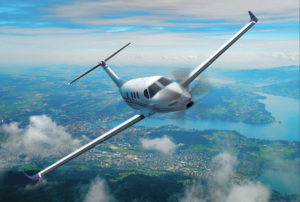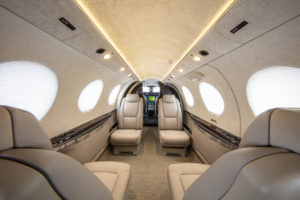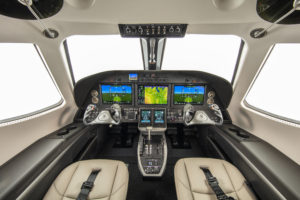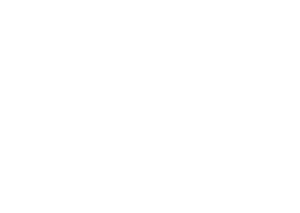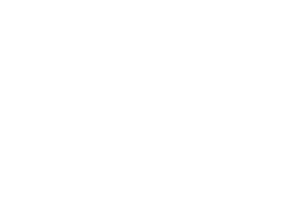Textron Aviation to debut new full-scale Cessna Denali mockup at EAA AirVenture 2018
WICHITA, Kan. (July 20, 2018) – Textron Aviation Inc., a Textron Inc. (NYSE:TXT) company, today announced it will unveil its new full-scale Cessna Denali mockup at EAA AirVenture 2018 in Oshkosh, Wisconsin July 23-29 at Wittman Regional Airport. The mockup features a complete cockpit with functioning avionics, fully updated interior and the McCauley 105-inch diameter composite, five-blade, constant speed propeller.
“We have made great strides in the design and development of the Denali,” said Rob Scholl, senior vice president, Sales and Marketing. “Since first introducing the aircraft at EAA AirVenture in 2015 — and unveiling the initial cabin concept in 2016 — we have fine-tuned the Denali’s characteristics based upon feedback gathered from our customer base and look forward to delivering a best in class experience for pilots and passengers alike.”
The turboprop features the widest cabin cross-section in the segment, providing passengers with additional head and shoulder room — and more room for cargo and baggage. Taking cues from design elements found in Textron Aviation’s large-cabin business jets, Denali delivers a new standard of luxury to turboprop passengers. Features such as larger seats and windows, as well as a modular refreshment center and an aft-located lavatory ensure passengers enjoy an enhanced level of comfort on board. During the show, demonstrations of the Denali’s highly adaptable cabin will highlight its abundant space and transform the cabin from an executive configuration to a combi layout – configured for both passengers and cargo.
“The mockup presents the first opportunity for customers to experience the full power of the Denali cockpit — one that revolutionizes the single engine turboprop segment,” Scholl noted. “The Catalyst engine, developed by GE Aviation, is the segment’s first powerplant with FADEC (Full Authority Digital Engine Control), equipping pilots with a digitally optimized single-lever engine and propeller control for ease of handling in flight. The Garmin G3000 flight deck modernizes turboprop avionics and significantly reduces pilot workload with dual touchscreen controllers and Automatic Speech Recognition (ASR) technology, enabling pilots to easily perform common tasks and manage the flight deck. Not one detail has been overlooked and the new Denali mockup is a true representation of the aircraft we will deliver to customers.”
The Cessna Denali program continues to progress on schedule. The company anticipates achieving the first wing mate and completion of the prototype airframes as the program nears first flight in early 2019.
About the Denali
Engineered to achieve cruise speeds of 285 knots and full fuel payload of 1,100 pounds, the Denali will have a range of 1,600 nautical miles at high-speed cruise with one pilot and four passengers and will be able to fly nonstop from Los Angeles to Chicago, New York to Miami or London to Moscow.
A first for aircraft in this class, the FADEC-equipped, 1,240 shaft horse-power GE Catalyst engine will ease pilot workload with its fully automated single-lever power and propeller control. Equipped with McCauley’s new 105-inch diameter composite, 5-blade, constant speed propeller, Denali’s engine features full feathering with reversible pitch and ice protection. Additionally, the engine design delivers an initial 4,000-hour time between overhaul and offers class-leading performance retention for an outstanding hot/high capability.
The Denali features the Garmin G3000 intuitive touchscreen avionics suite and includes three large high-resolution displays with split-screen capability. The G3000 flight deck’s solid-state weather radar, advanced Terrain Awareness Warning Systems (TAWS) and automatic dependent surveillance-broadcast (ADS-B) capabilities ensure compliance with the FAA’s NexGen air traffic control requirements.
Featuring the largest flat floor cabin in its segment, Denali’s design easily converts between passenger and cargo configurations. The executive seating configuration accommodates six individual reclining seats, club-configuration tables and a refreshment unit while the commuter seating layout enables nine individual forward facing seats. Additionally, the aircraft boasts a digital pressurization system maintaining a class-leading 6,130-foot cabin altitude at a service ceiling of 31,000 feet.
First in this class of aircraft, the Denali equips customers with an optional, externally serviceable belted lavatory with pocket door enclosure located in the back of the cabin. Denali customers will also enjoy very large cabin windows, interior LED lighting, a forward refreshment cabinet and an in-flight accessible baggage compartment.
Denali customers will have access to Textron Aviation’s unmatched global support network. Dedicated to complete life-cycle support, the company staffs its factory-direct service centers with expert service engineers offering maintenance, inspections, parts, repairs, avionic upgrades, equipment installations, refurbishments and other specialized services. Textron Aviation also offers a mobile support program featuring more than 60 mobile service units, a fleet of rapid-response support aircraft, and on-site service technicians and support.
*Photo credit: Paul Bowen Photography
About Textron Aviation Inc.
Textron Aviation Inc. is the leading general aviation authority and home to the Beechcraft, Cessna and Hawker brands, which account for more than half of all general aviation aircraft flying. The Textron Aviation brands represent unrivalled innovation, performance and leadership in the industry, and offer an unmatched value proposition rooted in the total ownership experience. Leveraging unparalleled speed-to-market, Textron Aviation provides the most versatile and comprehensive business and general aviation product portfolio in the world through five principal lines of business: business jets, general aviation and special mission turboprop aircraft, high performance piston aircraft, military trainer and defense aircraft and a complete global customer service organization. Textron Aviation has delivered more than 250,000 aircraft in over 143 countries. Its broad range of products include such best-selling aircraft as Citation business jets, King Air and Caravan turboprops and T-6 military trainer aircraft, all of which are backed by the industry’s most capable global service network. For more information, visit www.txtav.com.
About Textron Inc.
Textron Inc. is a multi-industry company that leverages its global network of aircraft, defense, industrial and finance businesses to provide customers with innovative solutions and services. Textron is known around the world for its powerful brands such as Bell, Cessna, Beechcraft, Hawker, Jacobsen, Kautex, Lycoming, E-Z-GO, Greenlee, Textron Off Road, Arctic Cat, Textron Systems, and TRU Simulation + Training. For more information, visit: www.textron.com.
Certain statements in this press release are forward-looking statements which may project revenues or describe strategies, goals, outlook or other non-historical matters; these statements speak only as of the date on which they are made, and we undertake no obligation to update or revise any forward-looking statements. These statements are subject to known and unknown risks, uncertainties, and other factors that may cause our actual results to differ materially from those expressed or implied by such forward-looking statements, including, but not limited to, the efficacy of research and development investments to develop new products or unanticipated expenses in connection with the launching of significant new products or programs; the timing of our new product launches or certifications of our new aircraft products; our ability to keep pace with our competitors in the introduction of new products and upgrades with features and technologies desired by our customers; changes in government regulations or policies on the export and import of commercial products; volatility in the global economy or changes in worldwide political conditions that adversely impact demand for our products; performance issues with key suppliers or subcontractors; and demand softness or volatility in the markets in which we do business.

